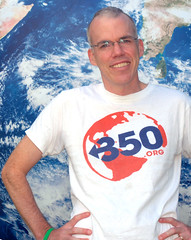On this good green news Monday, LGBG has opted to use this opportunity, in light of the tragic events at Sandy Hook Elementary School in Newtown, Connecticut, to reflect on the meaning and obligation of green living. We know that green living means different things to each of us, from protecting the air, land and water to recycling and not polluting to eating healthy diets and getting exercise. No matter the individual perspective towards green living, I think it is safe to say that there are basic tenets central to our understanding of green living. They are as follows:
- The choices made by any one individual affects all of us.
- The choices we make today will affect us at some point in the future.
- When we speak about saving the planet or the environment, we are talking about saving ourselves.
With this understanding, it is important for everyone to make living green an obligation, not a choice. The greatest obligation we have is to our planet and to our children, each and every one of them. They are the future of this land and as stewards of the Earth, we are obligated to deliver to them a clean, healthy environment. It is our responsibility to love and protect our young and to do all that we can to ensure that they grow up to be healthy, happy and prosperous adults. To that end, we are obligated to educate them. We send them out to school each day with the expectation, and a very reasonable one, that they will return home to us. In turn, our government has an obligation to provide a safe learning environment for our children and a guarantee that they will be protected and will be returned to us at the end of the day.
A major concern of green living is the safe and environmentally friendly design of buildings, and the conversation regarding this matter must be a top priority. It is urgent that city planners, engineers, environmental consultants and elected officials design and build schools that are safe and secure from intruders, with the staff and technology to monitor all visitors and deny admission to anyone perceived to be a problem or who pose a potential danger to staff or students. We know that buildings can be designed to be secure as our prisons are secure on any level that we need.
We also must address the safety of our society, especially our children, from a health perspective. This begins with coming face-to-face with the issue of mental illness. We need for every citizen to have access to health care. This goes a long way to aid in the identification of people, young and old, with mental health or emotional problems, which apparently is a substantial portion of our population as evidenced by the widely used mental health diagnoses of post-traumatic stress disorder , bipolar disorder and schizophrenia. We must provide treatment for these individuals, just as we would for people with cancer, heart conditions, arthritis autism or any other physical anomaly. A change in attitude that regards mental illness as a sickness will help families to come forth and seek help, rather than hiding these conditions so that a loved one will not be made to feel like a pariah in the community.
Green living obliges us to raise our children to respect our environment and the other people and animals who occupy this space with us. Our choices on how we treat our children, what we feed their minds and bodies, and the examples that we set for them to follow will determine their physical and emotional development and well-being. We must teach them to be kind to others and to never be a bully to any person or animal.
If we all accept green living as an obligation, not a choice, we can take a major step forward to heal from these recent tragedies and move forward to save our planet and our children. Let’s all respond to the call of duty to live green, be green.
On Children by Kahlil Gibran
Your children are not your children.
They are the sons and daughters of Life’s longing for itself.
They come through you but not from you,
And though they are with you yet they belong not to you.
You may give them your love but not your thoughts,
For they have their own thoughts.
You may house their bodies but not their souls,
For their souls dwell in the house of tomorrow,
which you cannot visit, not even in your dreams.
You may strive to be like them,
but seek not to make them like you.
For life goes not backward nor tarries with yesterday.
You are the bows from which your children
as living arrows are sent forth.
The archer sees the mark upon the path of the infinite,
and He bends you with His might
that His arrows may go swift and far.
Let your bending in the archer’s hand be for gladness;
For even as He loves the arrow that flies,
so He loves also the bow that is stable.

Description unavailable (Photo credit: theloushe)










